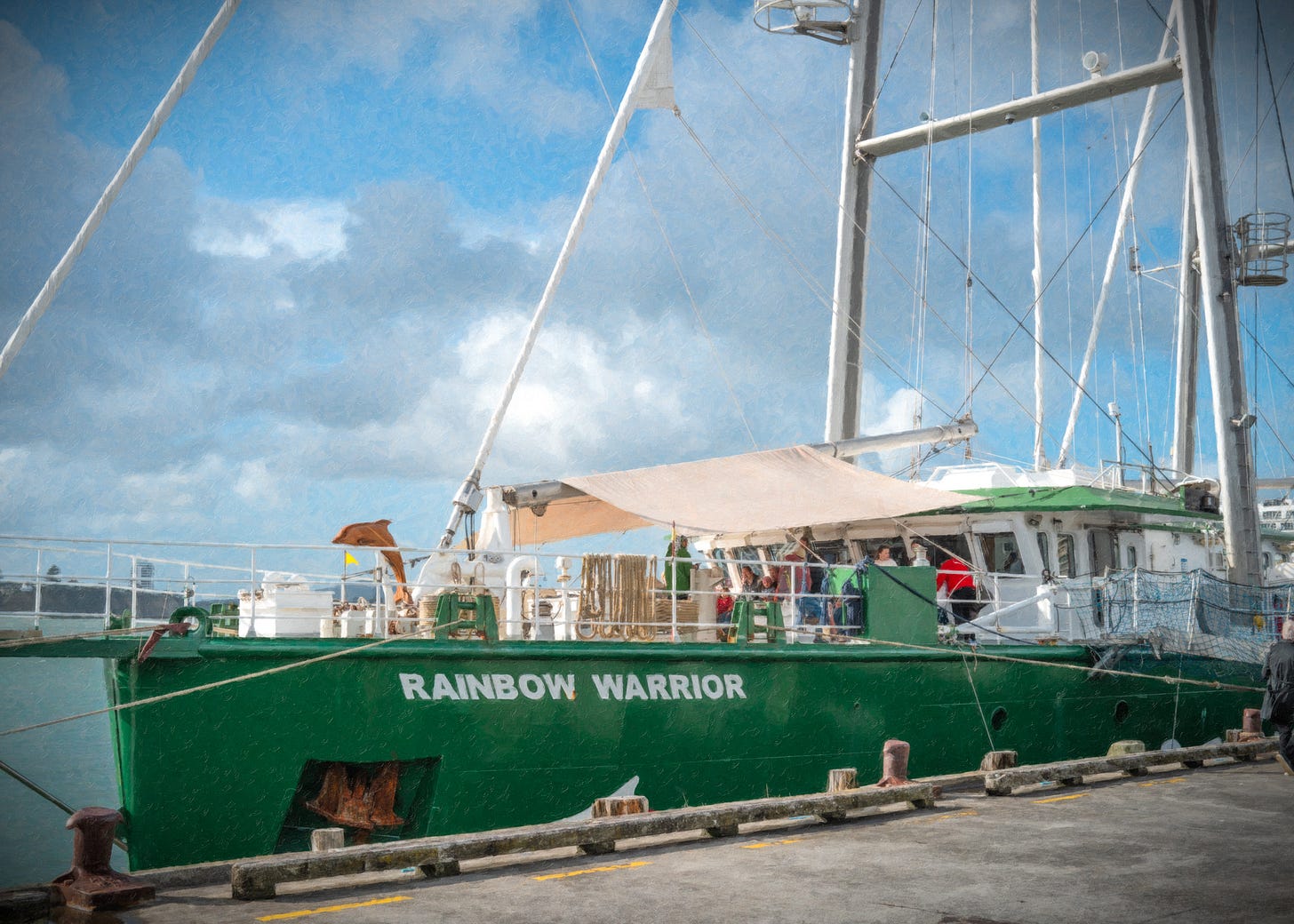NZ Visual Diary - entry 379
The Rainbow Warrior III
Dark water-laden clouds feature prominently in New Zealand winters, which made my photograph for today’s entry, with its brilliant patches of blue sky, all the more striking. Against that atmospheric backdrop, the port-of-call of the Rainbow Warrior (aka Rainbow Warrior III) in Auckland was spectacular as well as historically significant.
The vessel, currently docked in Wynyard Quarter, is the third iteration of the Rainbow Warrior. The original Rainbow Warrior was first commissioned by the UK’s Ministry of Agriculture, Fisheries & Food as a trawler in its fleet. It was purchased by Greenpeace in 1977.1
The fate of Rainbow Warrior I is intimately tied to New Zealand. In 1985, while docked in Auckland Harbour, the Rainbow Warrior was sunk as the consequence of two bombs detonated by saboteurs linked to the French government in retaliation for Greenpeace’s protests. The Rainbow Warrior had been deployed by Greenpeace in a blockade that attempted to stop French nuclear bomb testing in the South Pacific region. The history of events culminating in the sinking of the Rainbow Warrior can be found here.
The bombing marked a profound moment in the history of New Zealand as a country with a pronounced nuclear-free foreign policy.2
The Rainbow Warrior’s presence in New Zealand this week, exactly 40 years after the July of 1985 bombing, is a sober reminder of how no country, even one as remotely situated as New Zealand, is free from the entanglements of geo-politics.
The throng of people queueing for the public tour of the vessel likely reflects not only how much Kiwis love ocean-sailing ships but also their acute awareness of both the tragic fate 40 years ago of the vessel’s oldest sibling and New Zealand’s courageous but consequential response to nuclear armament proliferation.
Greenpeace, founded in 1977, is a global network of independent organisations dedicated to environmental activism and education. The network comprises 26 independent national/regional organisations in over 55 countries across Europe, the Americas, Africa, Asia, Australia and the Pacific, as well as a coordinating body, Greenpeace International, based in Amsterdam, Netherlands.
https://en.wikipedia.org/wiki/Greenpeace
Nuclear-free New Zealand
https://nzhistory.govt.nz/politics/nuclear-free-nz

